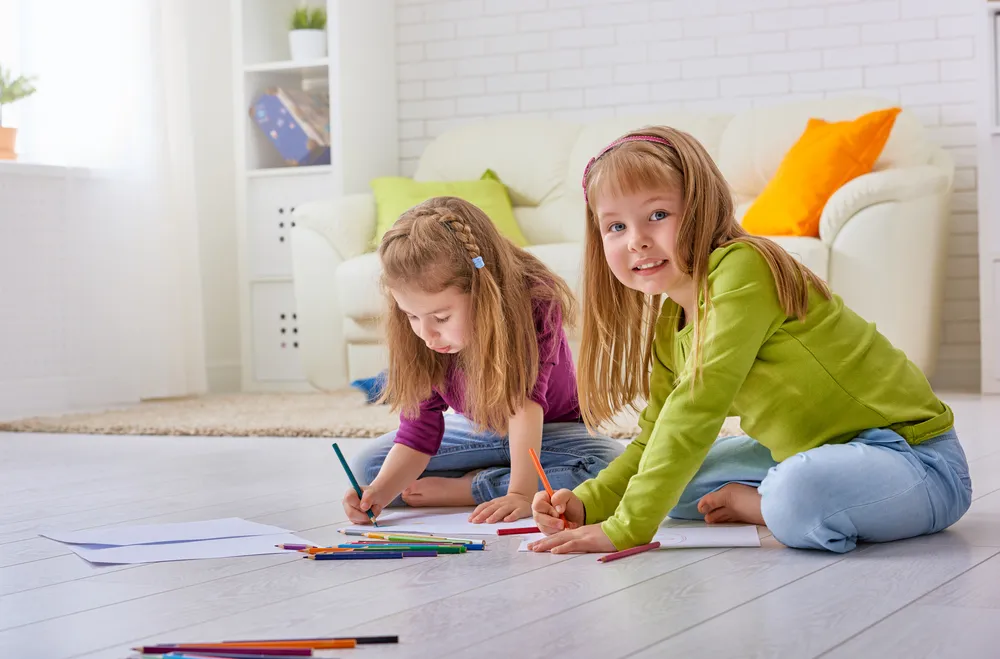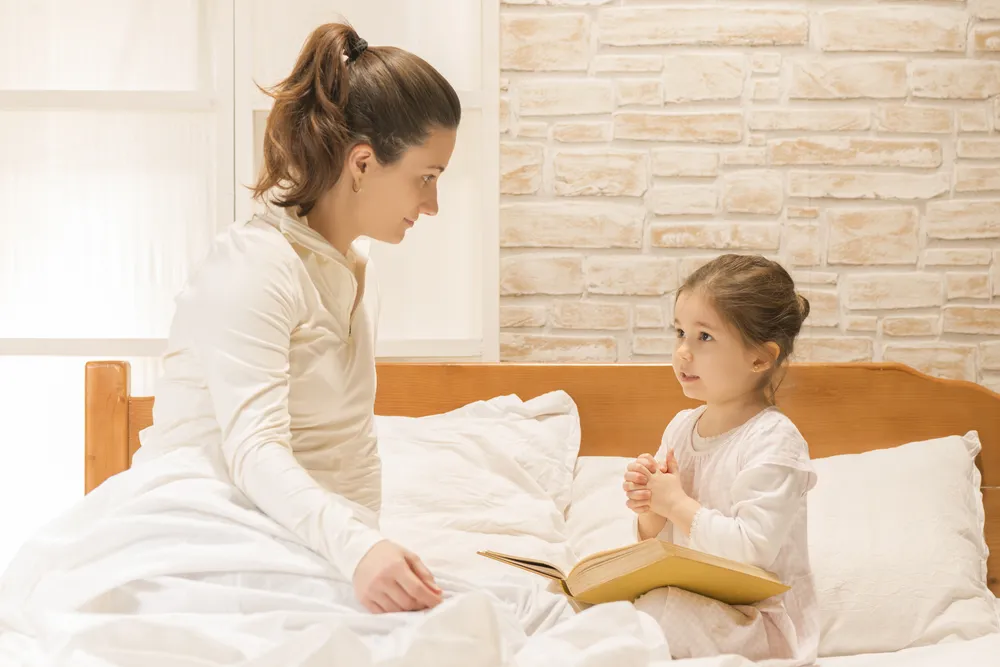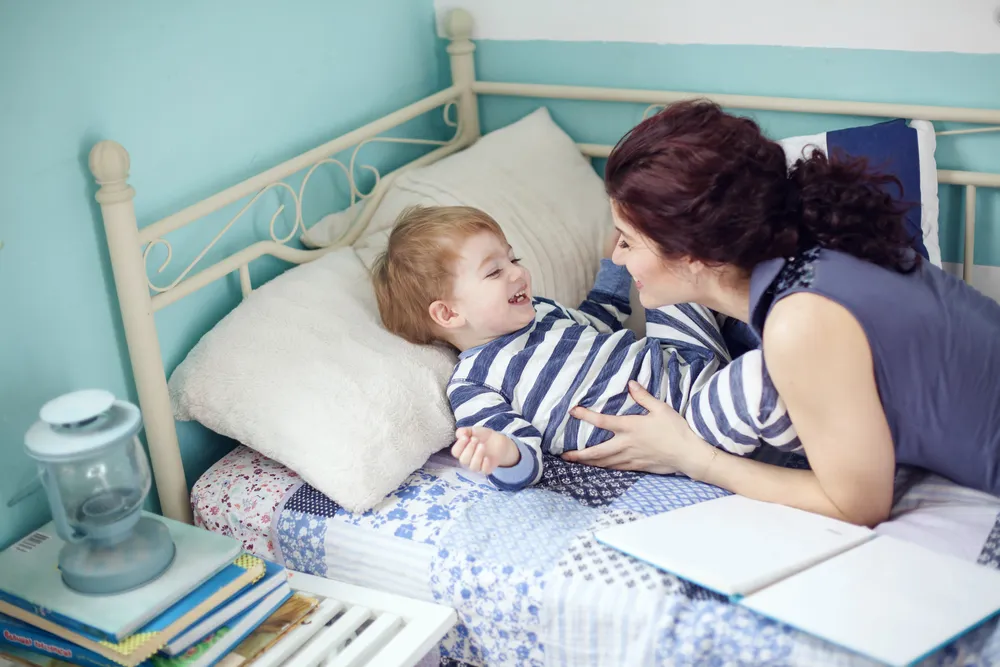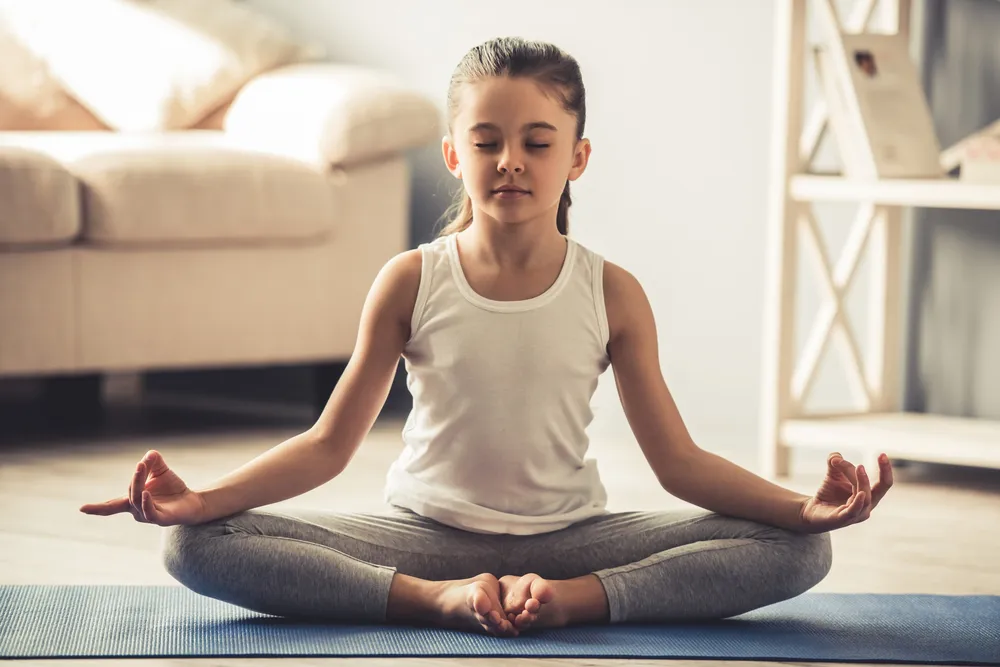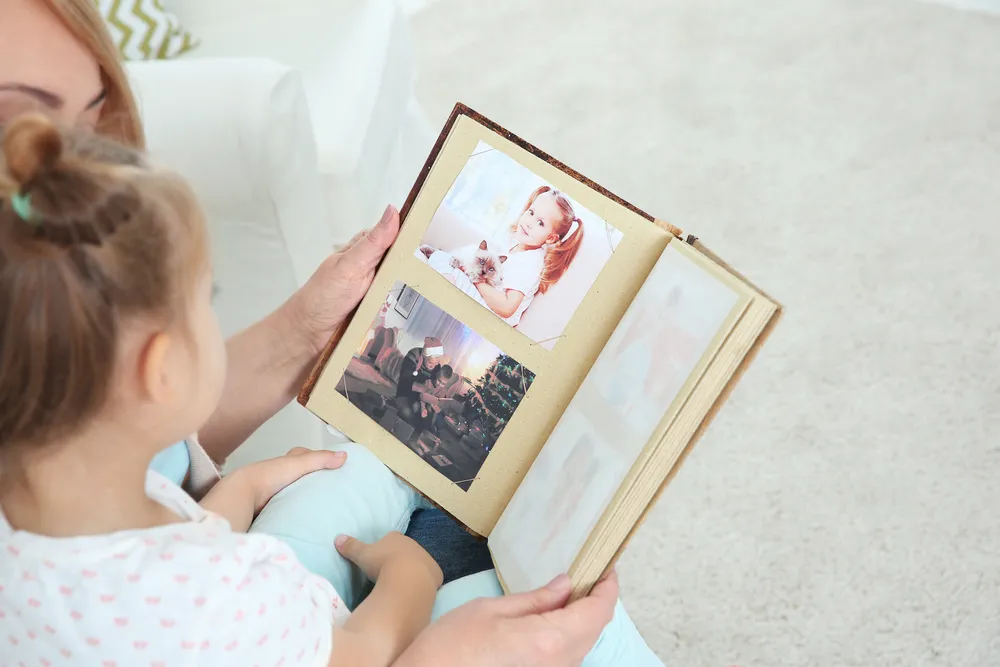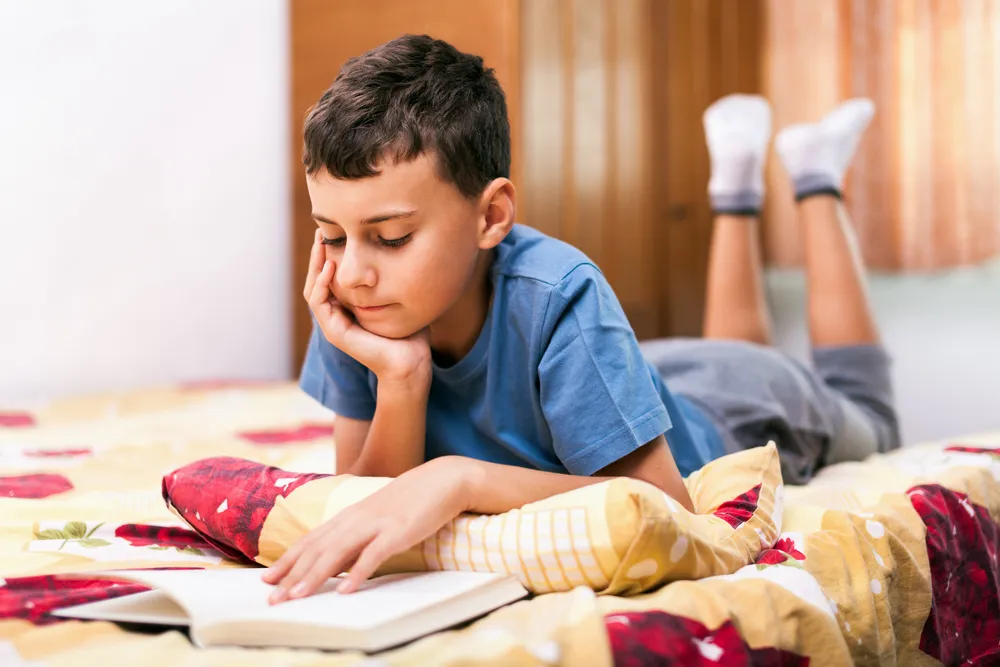Bedtime routines are always important, and a good routine can make the process go a whole lot smoother. However, there are times when we (and our little ones) crave a bit of variety. Reading before bedtime is a popular pre-sleep activity for many families. We all know that reading and literacy are very important, which is why reading has been such a popular activity to end the day, and transition us all into sleep. Whether you are tired of reading the same material, or you grow tired of reading in general and would like to mix things up a little, here are some great alternative pre-bedtime activities that you can try with your children, that will still help them wind down and drift off to sleep with no fuss. Best of all, these alternatives don’t include any screen time!
When your child needs to burn off a little extra steam, try planning a slightly higher-energy activity first, and then transition into a low-energy activity, that will create a calm and peaceful environment as their body gets ready to fall asleep.
18. Arts & Crafts
Bust out all of your arts and crafts supplies — coloring books, crayons, markers, and other craft supplies you have kicking around the house and have a hour of creative time (structured or unstructured) — just let their little imaginations run wild. Create, draw, design, build, paint something special for some one, or something to hang in the house. To get their creative juices going, you can suggest they illustrate what their favorite part of the day was, or something that they are looking forward to tomorrow.
Other fun crafting ideas include stringing necklaces and bracelets, playing with Play Doh, or some sensory play with rocks, shells, pasta, rice and water. The options are endless. Children will have fun creating something special, and it is a wonderful calming activity that is sure to help them get relaxed and ready for some shut-eye. As an added bonus, coloring for adults is also a great stress reducer. Mommy and daddy can also take part in this calming and peaceful activity and unwind as well.
17. Write In A Journal
Writing can be a wonderful outlet. Journaling is great for children who have difficulty expressing their needs verbally and making decisions about things. By keeping a journal of their thoughts, it is a great way to help them learn emotional organization. With journaling, children can recount daily activities and their thoughts and feelings about those activities. Journaling should not be confused with keeping a diary, and can be something even more versatile and incorporated into other areas of learning, including even math and science.
Journaling provides the opportunity for children to: jot down notes, explore and identify emotions, feel anger, express fears that they may have, examine pros and cons of something in order to be more decisive, look more carefully at their thoughts or a situation, gain insight into their own and other people’s motives, see positives as well as negatives, plan difficult conversations in advance, improve their written communication, improve their spelling and grammar, and even improve their reading and comprehension skills. It can be a wonderful activity for so many reasons, and best of all, it will help them clear their conscious and get them ready for a peaceful sleep.
16. Progressive Muscle Relaxation Exercises
For adults and children alike, progressive muscle relaxation can help those who have difficulty getting sleep. This relaxation therapy was first developed by Edmond Jacobson, MD — a Chicago physician back in 1915 and was published in the 1920’s. Progressive muscle relaxation is an exercise in which you systematically tense then relax all the muscle groups of your body, and helps promote overall relaxation. It also has many other benefits including: lower blood pressure, less muscle tension, less anxiety, lower levels of fatigue, improved quality of sleep, and a better sense of overall well-being.
Progressive muscle relaxation can help people who have trouble falling asleep by relaxing the body, and calming the mind. It takes about 10 to 15 minutes. During the process, you will focus on each muscle group in your body, first tensing selected muscles for a few seconds, and then slowly relaxing them over the course of 20 to 30 seconds. Have your little one lay down in a quiet space (their bed), free of distractions, and breathe steadily as you progress in the following order: face, shoulders & arms, chest & abdomen, back, hips & buttocks, legs & feet. After systematically tightening and relaxing all the muscle groups in the body, they should feel relaxed and calmed and ready for sleep!
Detailed Step by Step Instructions:
- Face. Lift your eyebrows to wrinkle your forehead, and then slowly relax and let the tension out of your forehead. Close your eyes tightly and then relax and slowly open them. Tense your lips, cheeks, and jaw muscles by grimacing, and then feel a sense of serenity come over your face as you relax all your facial muscles at once.
- Shoulders and arms. Bring your shoulders toward your ears, tensing your muscles, and then slowly let them relax. Starting with your upper arms, flex your biceps, and then relax, letting the tension out of your muscles. Tense your forearms, and then slowly let them relax.
- Chest and abdomen. Take a deep breath and tense the muscles within your chest and abdomen, and then slowly exhale as you relax these muscles.
- Back. Flex the muscles in your back as you arch them on the floor or bed, and then relax and let the stress and tension go out of your back muscles.
- Hips and buttocks. Tighten the muscles in your hips and buttocks, and then slowly release the tension and feel the stress leaving this area of your body.
- Legs and feet. Flex your leg muscles, squeezing your legs together, and then slowly relax. Flex your feet for a few seconds, and then relax them. Curl your toes, and then slowly let them return to neutral.
15. Let Them Tell The Story
If your little one still enjoys some form of story telling at the end of their busy day, instead of opening up that book you have both head 1,000 times, try letting your little one dictate their very own story. Mommy and Daddy, give your voice a rest and just sit back and be entertained with whatever story it is they come up with!
This bedtime activity will let their imagination run wild and really stimulate their creativity. All the extra thinking they do as they build their story, will be very effective in tiring them out and getting them ready for some sleep!
14. Play a Bedtime Game
There are a lot of low-key games that you can play with your child before bedtime. A fun suggestion to try includes shutting off all the lights in the house, and supplying everyone with a flashlight for a little game of shadow puppets. This low-light approach can also help make bath and bedtime more relaxing, and get them geared up and ready for sleep.
Another fun game you can play is called “Hide and Sleep”. This game involves hiding their stuffed animals, toothbrush and pajamas, and having them find and complete each step of bedtime preparation as they find them.
13. Say Goodnight to Their Favorite Toys
Another fun bedtime activity that toddler and young children may enjoy is having them tuck in their favorite doll or stuffed animal before they get tucked in, giving them an added sense of accomplishment (and security) as they drift off to sleep.
Many children enjoy sleeping with stuffed animals, as it can reduce nighttime fears. Tell your child their stuffed animals are their friends that will protect them through the night. This technique can be applied on its own, or in tandem with the other aforementioned approaches.
12. Cuddle Up With Them
Bedtime is the perfect time to snuggle up with your little one, and would make a wonderful transition to sleep. It is said that physical contact releases a certain chemical in the brain that promotes happiness and lower stress hormones.
Cuddling and hugging can literally put you in a better mood. If your little one had a particularly tough day, a little cuddle could be just the trick.
11.Bake Together
Something I have fond memories of doing with my parents is baking! I think it is a wonderful activity for parents to do with their children from a young age, and introduce them to not only new food ingredients, but also an fun introductory lesson to math and science even!
Baking together doesn’t have to be hard with little kids. You can make muffins, cookies, or some homemade granola — just aim for something that is quick baking and doesn’t have too many ingredients. Include no more than 4 or 5 ingredients which is just right for their interest and attention span. This is a great pre-bedtime activity that you can do together once a week or once a month!
10. Yoga
Children’s yoga is more popular than ever, and it’s a great calm-down activity for little ones. Teach your little one a few simple child-friendly and sleep-friendly poses that help them transition from day to night and wind their body down.
You may want to consult a yogi for advice for this one, or do a little research online. Perhaps try: eagles pose, downward facing dog pose, cat pose, extended child’s pose, and cobblers pose, to start! Feel free to join in — it is a great opportunity for you to try some poses alongside your little one.
9. Work On A Puzzle
Working a puzzle is another wonderful quiet activity for children, either alone or with another sibling or parent. Puzzles are a great low-energy, screen free alternative that will help build skills working alone or collaboratively with another. It is a quiet and restful activity that they can do before bed, while still stimulating their brain.
Start with simpler 20 piece puzzles and let them work their way up to 50 to 100 piece puzzles. They don’t need to complete it in one sitting — they can always continue working on it another day of the week before bed.
8. Reflect on the Day
One of the simplest and best ways to end a day is by having your child list his or her “highs and lows” of their day. Not only can this be very soothing, but it’s a great way to spark communication about what’s going on in your child’s world.
There’s a lot going on in their brain when they are going to bed. Clearing their mind may be a bit difficult, but taking a few moments to reflect on their day, can help them quiet their thoughts and start to relax until they fall asleep!
7. Talk About Tomorrow
As important as it can be to reflect on the day they just had, it can be even more beneficial to take time to talk about what will be going on tomorrow! It is important to remind your child how much there is to look forward to in the day ahead.
What friends will they see at school? What would they like to have for dinner? Is anything coming up that they would like to discuss? The possibilities are endless. Again, open dialog between you and them is always a good thing!
6. Get Pampered
Bust out your home spa treatment supplies! Whether you do manicures, pedicures, foot soaks, hair braiding or facial masks, having a relaxing spa night at home before bedtime with your kids could be really fun, while allowing them to wind down before bed.
Don’t have any spa products on hand? You can always whip up your very own, all-natural homemade products with items you have in your fridge and pantry. Try creating something using lemon, honey, avocado or oatmeal — to name just a few ingredients!
5. Go for a Walk At Dusk in PJs
Family walks at night are a great way for everyone to unwind. Load up the kiddos in the stroller or wagon and head out for a 30-minute walk around the neighborhood. The fresh aid can really help children unwind, and not to mention, it gives parents time to talk and reconnect with each other after a long day.
Furthermore, being out doors at dusk sends subliminal messages that the sun has gone to bed, it’s getting dark, and it’s bedtime for your children as well. You may notice several yawns along the walk which proves why nighttime walks are so effective! Let them wear their pajamas, so they are ready to hop right into bed when they get back home.
4. Have a Mini Camp Out
What kid doesn’t like setting up a tent! Whether inside or outside, a tent is a wonderful place where you little ones can go a quietly play with their toys, read a book, or even take a flash light for some shadow puppets!
You can make a simple blanket fort, or a quick pop up two-person tent is all you need. While it may not be a complete overnight camp out, being able to play in the tent makes it feel like a special occasion for them.
3. Turn on the Music!
Turn the lights down low, and turn on some soft or melodic tunes to soothe your child, while providing a comforting atmosphere for them to transition into bedtime. After their bedtime routines have been preformed and they are in bed, at low volumes, play soft music in the background.
You can combine this with talking about your child’s day, or talking about what is on the go for tomorrow — or you can even do a little sing along! Keep a kid-friendly playlist at the ready, with some soothing songs that they will enjoy.
2. Look at Old Photos Together
Another fun activity to do with your little one before they turn in for the night is to look through old pictures and baby books! Talk about your own childhood and what things were like when you were growing up. Not only will they absolutely love it, but so will you!
Before bed is a great time to connect with your children, and there is no better way of connecting than taking a trip down memory lane together!
1. Let Them Read On Their Own
Experts say that continuing to read together for pleasure throughout primary school is ‘vital’ for your child’s development (until about age 7). So, even though this is a list of alternative pre-bedtime activities instead of reading to your child, reading to your child is still important for their development — so don’t ditch it all together. Just mix it up every once in a while to give yourself a bit of a break, and a bit of variety!
To conclude this list, I will simply suggest the option of letting your little one enjoy a story book or two on their own on nights you aren’t up for reading. Even if your little one isn’t reading-age, you can still give them a stack of their favorite books to flip through quietly on their own at bed.

